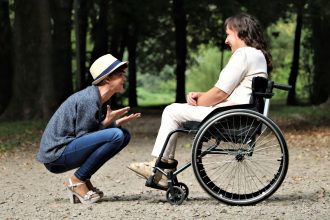For many survivors, returning to work or school represents more than just a practical step — it is a powerful symbol of recovery, independence, and hope. These roles provide income, purpose, and social connection. Yet brain injuries often make this transition difficult. Cognitive changes, fatigue, communication struggles, and emotional challenges can turn a normal workday or school routine into something overwhelming.
Despite the obstacles, many survivors do return successfully. The process takes planning, patience, and support, but with the right strategies and accommodations, it is possible to reclaim professional or academic life.
Understanding the Challenges
Brain injuries affect each person differently, but several common challenges often appear when survivors try to reintegrate into work or education. Memory lapses, slowed thinking, or trouble concentrating can interfere with tasks that once felt automatic. Physical limitations — whether chronic headaches, dizziness, or mobility problems — may reduce stamina. Communication can also be affected, with some people struggling to find the right words or follow group discussions. Emotional changes, such as anxiety or irritability, can add further stress.
What makes these challenges especially difficult is that they are not always visible. Survivors often describe frustration when colleagues, teachers, or peers assume they have “fully recovered” simply because they look fine.
The Role of Rehabilitation
Rehabilitation provides the bridge between recovery and reintegration. Therapists often simulate work or school activities, helping survivors practice concentration, problem-solving, or physical endurance in a safe environment. Vocational rehabilitation specialists play an important role as well. They help assess whether a return to the previous job or academic workload is realistic, or whether new roles and responsibilities would better match current abilities.
Speech-language pathologists and neuropsychologists prepare survivors for real-world demands such as remembering instructions, organizing tasks, or maintaining attention. This preparation builds confidence and helps identify which accommodations might be needed before stepping back into the classroom or workplace.
Returning to Work
The return to work is usually gradual rather than immediate. Many survivors begin with reduced hours or lighter responsibilities, gradually increasing as stamina and confidence improve. Employers who are educated about brain injury are better equipped to provide support, whether that means adjusting schedules, modifying job duties, or introducing assistive technology such as reminder apps or voice-to-text software.
Open communication is key. Survivors who share their needs with supervisors are more likely to receive understanding and flexibility, but this can be a daunting step. Rehabilitation specialists and case managers often assist with workplace reintegration, helping to explain invisible symptoms to employers and advocating for accommodations.
Returning to School
School presents its own challenges. Students with brain injuries may struggle with reading comprehension, note-taking, or managing multiple assignments at once. Fatigue can make full course loads difficult, while noisy classrooms may intensify sensory sensitivities.
Many students succeed by using accommodations such as extended testing time, access to note-taking assistance, or lighter course loads. In the United States, legal protections such as Individualized Education Programs (IEPs) and Section 504 plans guarantee the right to reasonable adjustments. Similar frameworks exist in other countries, though families often need to actively advocate for support. Teachers and professors who understand brain injury can make a tremendous difference by creating learning environments that foster inclusion rather than isolation.
Legal Rights and Accommodations
In the workplace, survivors are often protected by disability rights legislation such as the Americans with Disabilities Act (ADA). This law requires employers to provide reasonable accommodations, including flexible schedules, modified duties, or adaptive technology. In schools, the Individuals with Disabilities Education Act (IDEA) and Section 504 provide similar protections for students.
Knowing these rights is essential. Survivors and families who understand the laws are better prepared to request accommodations confidently and persistently. Advocacy organizations and brain injury associations often provide resources to guide families through this process.
The Emotional Side of Reintegration
Reintegrating into work or school is not only a practical challenge but also an emotional one. Many survivors fear being unable to keep up, while others grieve the loss of their pre-injury abilities. Some feel embarrassed when they need to ask for help or accommodations.
Emotional resilience is strengthened through counseling, peer support groups, and vocational coaching. Families play a key role as well, offering encouragement, celebrating small milestones, and reframing setbacks as part of the normal recovery process. Coping strategies such as pacing, mindfulness, and stress management make the transition more manageable.
Long-Term Outcomes
For some survivors, returning to the same role as before may not be realistic. Instead, recovery may open doors to new paths — different careers, part-time education, or community roles that provide purpose and satisfaction. What matters most is that survivors continue to engage in meaningful activity, whether that means employment, study, volunteering, or creative pursuits.
Long-term reintegration is best viewed as a journey. It may take months or years to find the right balance of abilities, goals, and accommodations. Progress often comes in stages, but each step toward independence brings confidence and renewed identity.
Conclusion
Returning to work or school after a brain injury is one of the most meaningful steps on the road to recovery. It is rarely simple, and it demands flexibility, support, and advocacy. Yet with rehabilitation, accommodations, and emotional resilience, many survivors rebuild professional and academic lives that bring fulfillment and connection.
The path may not look exactly like it once did, but it can still be rich with purpose and opportunity.







